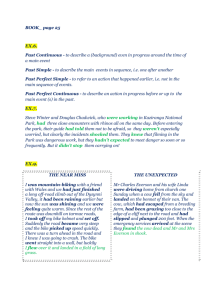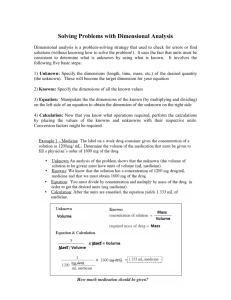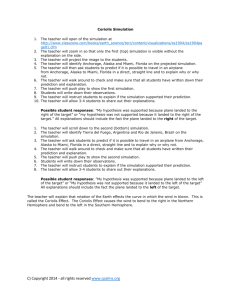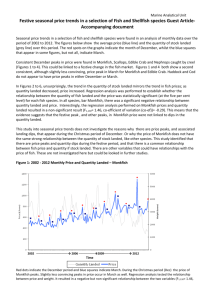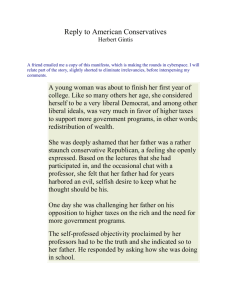The landpolicy realise one of the most serious breach of the
advertisement
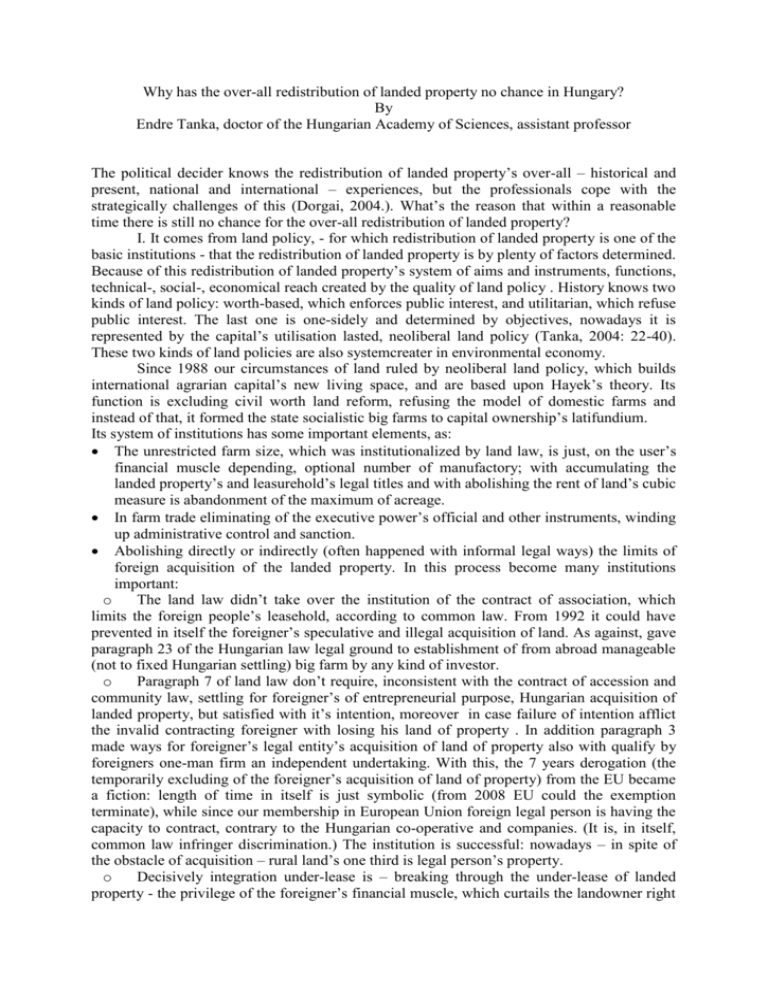
Why has the over-all redistribution of landed property no chance in Hungary? By Endre Tanka, doctor of the Hungarian Academy of Sciences, assistant professor The political decider knows the redistribution of landed property’s over-all – historical and present, national and international – experiences, but the professionals cope with the strategically challenges of this (Dorgai, 2004.). What’s the reason that within a reasonable time there is still no chance for the over-all redistribution of landed property? I. It comes from land policy, - for which redistribution of landed property is one of the basic institutions - that the redistribution of landed property is by plenty of factors determined. Because of this redistribution of landed property’s system of aims and instruments, functions, technical-, social-, economical reach created by the quality of land policy . History knows two kinds of land policy: worth-based, which enforces public interest, and utilitarian, which refuse public interest. The last one is one-sidely and determined by objectives, nowadays it is represented by the capital’s utilisation lasted, neoliberal land policy (Tanka, 2004: 22-40). These two kinds of land policies are also systemcreater in environmental economy. Since 1988 our circumstances of land ruled by neoliberal land policy, which builds international agrarian capital’s new living space, and are based upon Hayek’s theory. Its function is excluding civil worth land reform, refusing the model of domestic farms and instead of that, it formed the state socialistic big farms to capital ownership’s latifundium. Its system of institutions has some important elements, as: The unrestricted farm size, which was institutionalized by land law, is just, on the user’s financial muscle depending, optional number of manufactory; with accumulating the landed property’s and leasurehold’s legal titles and with abolishing the rent of land’s cubic measure is abandonment of the maximum of acreage. In farm trade eliminating of the executive power’s official and other instruments, winding up administrative control and sanction. Abolishing directly or indirectly (often happened with informal legal ways) the limits of foreign acquisition of the landed property. In this process become many institutions important: o The land law didn’t take over the institution of the contract of association, which limits the foreign people’s leasehold, according to common law. From 1992 it could have prevented in itself the foreigner’s speculative and illegal acquisition of land. As against, gave paragraph 23 of the Hungarian law legal ground to establishment of from abroad manageable (not to fixed Hungarian settling) big farm by any kind of investor. o Paragraph 7 of land law don’t require, inconsistent with the contract of accession and community law, settling for foreigner’s of entrepreneurial purpose, Hungarian acquisition of landed property, but satisfied with it’s intention, moreover in case failure of intention afflict the invalid contracting foreigner with losing his land of property . In addition paragraph 3 made ways for foreigner’s legal entity’s acquisition of land of property also with qualify by foreigners one-man firm an independent undertaking. With this, the 7 years derogation (the temporarily excluding of the foreigner’s acquisition of land of property) from the EU became a fiction: length of time in itself is just symbolic (from 2008 EU could the exemption terminate), while since our membership in European Union foreign legal person is having the capacity to contract, contrary to the Hungarian co-operative and companies. (It is, in itself, common law infringer discrimination.) The institution is successful: nowadays – in spite of the obstacle of acquisition – rural land’s one third is legal person’s property. o Decisively integration under-lease is – breaking through the under-lease of landed property - the privilege of the foreigner’s financial muscle, which curtails the landowner right of disposal (mostly relating to part-ownership farms) to the benefit of the investor and, in spite of the dispersal of small-plot, insures unified large-scale farming. Also foreigner investor’s advantage has – by right of plantation or setting-up a fish-pond, recently on the ground of animal keeping plant or upkeep fish-pond – pre-emptive lease right priority over any other leaseholder, which is also the guarantee of the prior acquisition of land. o The land law hasn’t enforced – in spite of the contract of accession and community law – since our membership of the European union the prohibition of marketing person’s negative discrimination in farming lease’s market: instead of guaranteeing any ground-renter the same cubic measure leasure, not only keeping up co-operative’s and company’s big farming advantages (instead of 300 hectare 2500 hectare), but with the extension of this gives another legal title. (By National Land Fund given 50 years leasure don’t count in this restriction.) In the land law’s institutional system, which establishes landlordism, the legal order of pre-emption and pre-emptive lease fills the part of “central controls”, which ensures getting landed property and tenure of a land for in any land living, foreign and national, big farming proprietor of the firm with debarring local farmers. The techniques of ordering is here the cynical using of “virtual law”: according to the law local is authorized to the prior right of emption and tenure of land, who perhaps has never been in Hungary, but with share or stock he is proprietor of the that ground-renter legal entity, which has its seat in the settlement in conformity with the farm’s position (or in 15 kilometres from the settlement’s administrative boundary). So others can that farms get, to which the latifundium’s proprietor don’t lay a claim. In the service of the supranational agrarian capital has leading part also the neoliberal land policy’s other institutions having some significance beyond the land law but is entwined with it. o So the National Land Reserves has got not a public stock of land’s economy, but it is duty to increase the stock of land’s system of big estates by state means. This function is guarantied thereby, that the any land grant (selling, leasing) of the National Land Serves has legal effect by exercising pre-emption and pre-emptive lease rights binding based on he land law, also this agency is liable to offer the land to the large estate’s proprietors of the firm. The resource is provided mostly to them by the „life-rent for the land”-program, which is together amoral and illegal: it improves, for acquire the landed property at scanty prise, the sorry plight of the small farmers, who can’t get to their land in kind and can’t to sell it in he market, moreover who are exposed at their old age and pauperism, while it cogitate for the death of disposer by the law amount and the exclusion succession. The community law won’t have such an agency, but guarantees the prompt payment of the real market price for the owner handed owner his land by early retirement of leaseholder. o The land policy realise one of the most serious breach of the constitutional by state „misappropriate” of lands part-ownership. The state under the rule of law guarantees the constitutional remedy of private ownership was obliged to transfer possession of the justified owners this -3,6 million hectare- land found in kind after 1989, but this happened in the small measure possible in spite of the 16 times repeated modification of the 1993:II. so far. The real cause of the public administration’ default was besides the commitment of the political legislative the aim, that also this determining land found (being more than the half of the 5,8 million hectare gross land ) fortify the system of large estates by the way of giving possession transferring property „freezing” and ingenious techniques for investors of solid capital. It is not acceptable as settling the claim of ownership, that nowadays is doubtful „only” the portion of 1,5million hectare land , because the undivided common possession curtail the property disposal in like manner, as the converting of private property .The breach of the constitutional is added to by the sharing out the extant lands between owners according to „rest-principle”, moreover that the person, who can’t come by the landed property in kind, is entitled only to 80 000 Forint/hectare indemnity. Because the deprivation of property arises here forced, by dysfunction of public administration, it means expropriation by rights, that’ why total, immediate, based value proportional –also equal to the relay market price – recompense were due. o In rejecting of the value based land policy has got brunt the Contract of Accessiation and the community and national agricultural subvention based on the reforms of the Common Agrarian Policy, which is wholly opposite to the constitutional aims of the Common Agrarian Policy. Between the latter, is also decisive, that the Common Agrarian Policy needs to „provide appropriate living standard for the agricultural population, in the first place by increasing of the in agriculture living person’s per capital income.” (RSZ 33. paragraph 1/b.) The living standard’s guarantees is given up in advance in one respect - by the seriously disadvantage subvention rate compared to the 15 EU entitled -, that gives only the quarter part of the allowance on right of the 1. . This guarantees the elimination from the competition and being forced to leave agriculture for 91 per cent of the today growers. Within 10 years. On the other hand the concept of viable plants–like nether threshold of the right to investingdeveloping subvention –is quantified in 2 EME units by the cabinet (in national competence). It can give subvention only for –in view of farmer’s number - 91per cent of the plants, while the 91 per cent is preclude from the production for the market, so these are „condemned to death”. („…in 10-15 years distance , based on the leasehold for 70-80 000 farms /private and collective/ it’s possible, to become steady viable.”) II. The land policy’s content, which can describe only by some element of the system, determines the vital conditions of the redistribution of landed property. Nowadays in the country –by the institutional system directed by purposes- there is annihilate of the agricultural population, which is shrivelled to 15 per cent compared to the rate of 1989, there is distraction of villages, devastation of the rural area and environment. (vide shattering of the values of the administration, traffic, health, education and social provision etc.). The „overall” character of the redistribution of landed property is not only technical category (the extension to the full settlement or to it’s separable part), but a quality mark too: it must be in service of common goods and life qualities with it’s effects. Nowadays the chances of the redistribution of landed property inland is a light year away from the public redistribution’s principles of EU, which has become the part of the CAP. Not the techniques (the efficiency-mending, which is available with increasing of the board size) but the enlargement of the employment by developing of agriculture, the establishment of young farmer’s main professional farming, the reserving of the rural population, the environmental protection and nature conversation, and so –between of the reserving of the cultural values – the minority autonomy and the ensuring of ethnic language’s survival are in he focus of them. (EU-doc. 2004-5)Our land policy, considering to the European solidarity and ecosocial agricultural model, can’t use the obvious toolbar for self-defence to stop the global capitalist regime eliminating the sustainable ness. For example the plant’s regulation recognise the claim, but don’t want to limit the extent large estate system, only in he future would be prohibited the legal maximum exceeded increase of the land size. (Kaproncai, 2006:42) The break point is clear: in land policy needs for fundamental change to overcome the value based land policy and to adoption legal institutional system of the community law. Without this the over-all redistribution of land property won’t represent the public interest, so can’t vindicate to social general agreement and support. If namely the redistribution of land property is compelled from the beginning to give up the quality of life in the Hungarian rural area, the element needs of the nearly 1 million rustic estate and 2million population concerned in agriculture., than the society can have opposite interest only in „land fusion” serving the profit increasing of big estates. This latter is not a public affair, not the renewal of the nation agriculture and rural, but reserve only the global agrarian capitalist regime in Hungarian. List of sources: Dorgai L. (szerk.) et alt. : A magyarországi birtokstruktúra, a birtokrendezési stratégia megalapozása. AKI, Bp. Agrárgazdasági Tanulmányok 2004/6. sz. Tanka E. : Magyar birtokpolitika az Európai Egyesült Államokban. Alterra K. Bp. 2004. Oláh J. : Környezetgazdálkodás. IV. Erőforrásgazdálkodás. Szarvas, 2006. Kapronczai I. (szerk.) et alt. : Az agrárszereplők alkalmazkodóképességének jellemzői. (Termelői válaszok időszerű kérdésekre.) AKI, Bp. 2006. EU-dok. : Regrouping agricultural land and forests in Central and Eastern Europe. (Doc. 10105, 10 March 2004, Parliamentary Assembly) EU-dok. : The costs of Common Agricultural Policy (Report Com. on the Environment, Agriculture and Local and Regional Affairs, by Mr. Paul Flynn, UK, Parliamentary Assembly Doc. 10649, 12 July 2005) Az anyagon belül hivatkozás: 1449 (2005) Resolution of Parl. Assembly on ”The environment and the Millenium Development Goals” Rövidítés: RSZ = Római Szerződés az EGK alapításáról, 1957. Bp. 2006 augusztus 12. (translated: dr. Bajor Rita, dr. Bőhm Judit)
